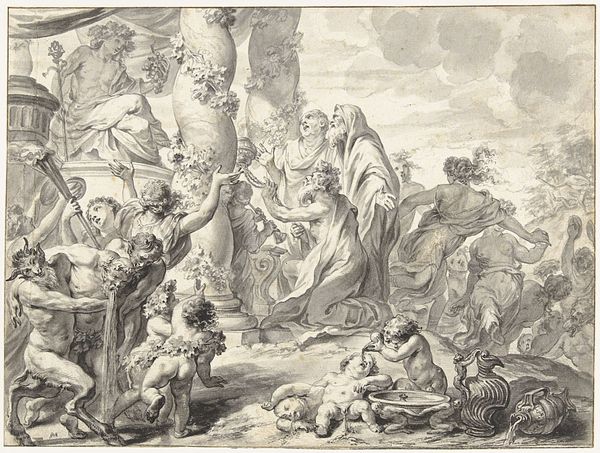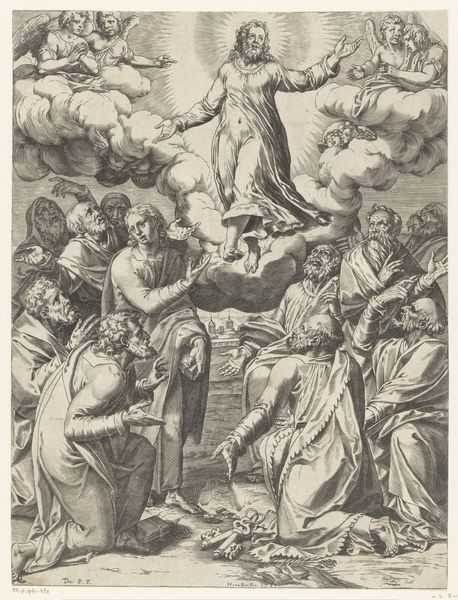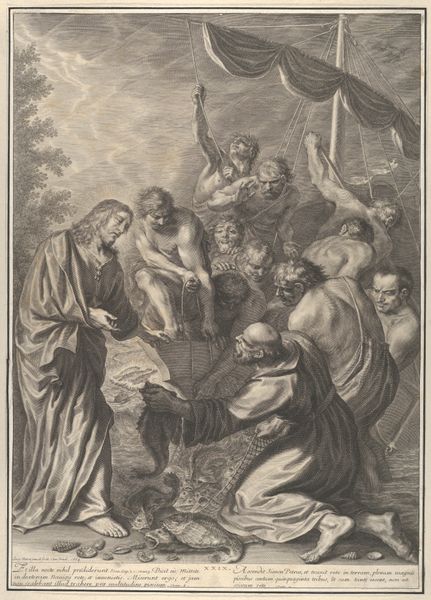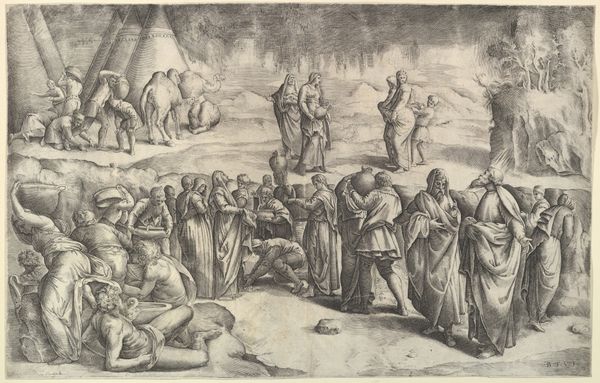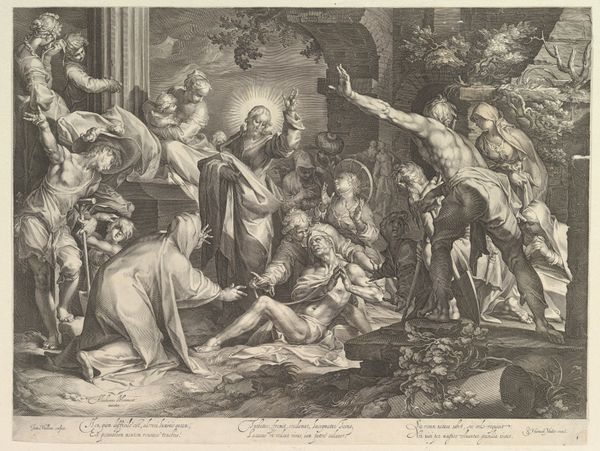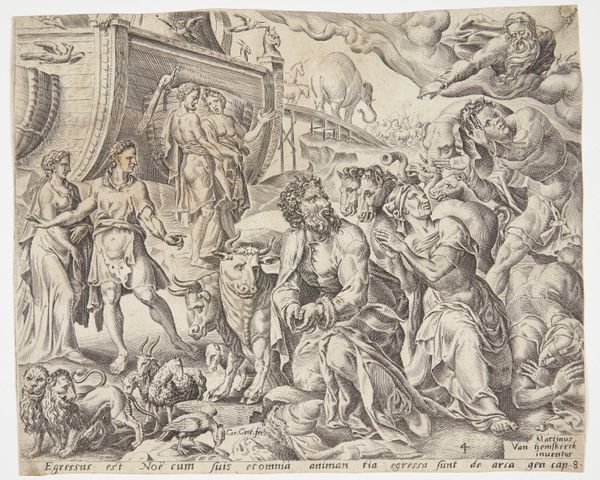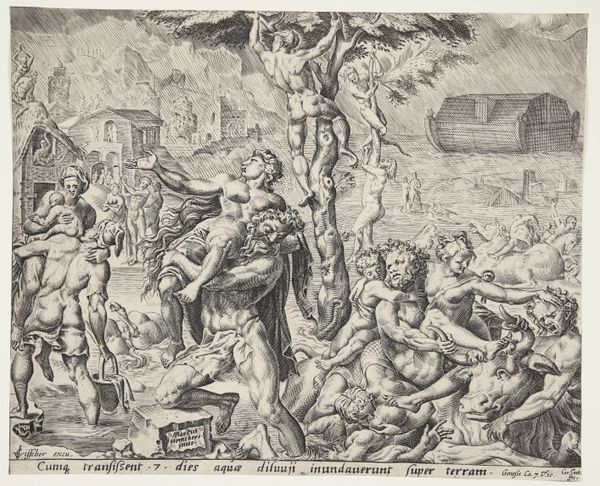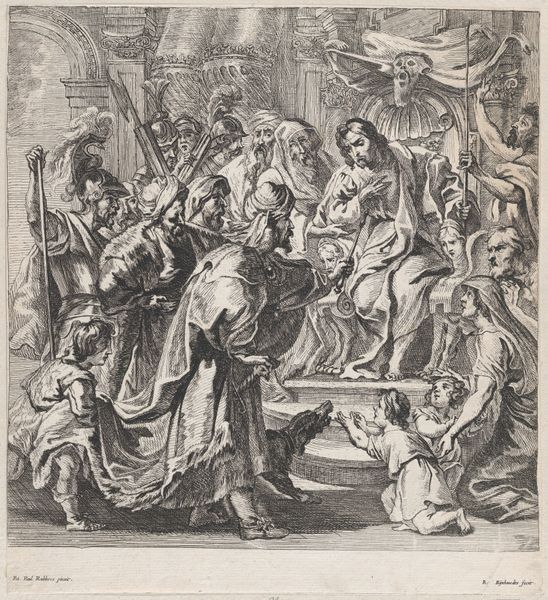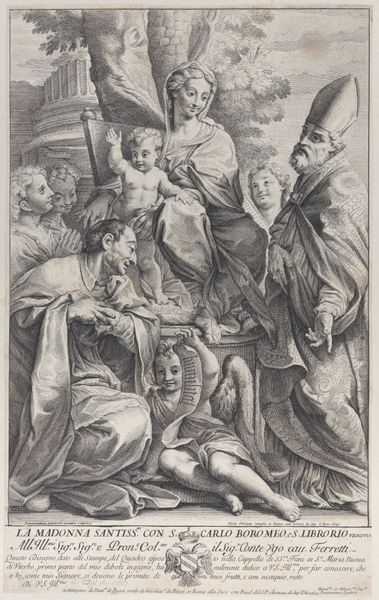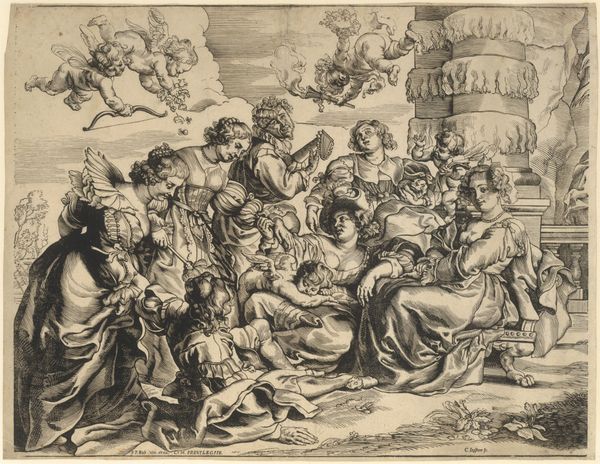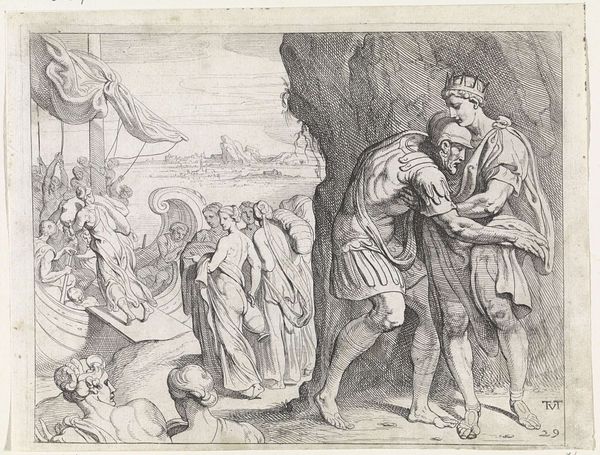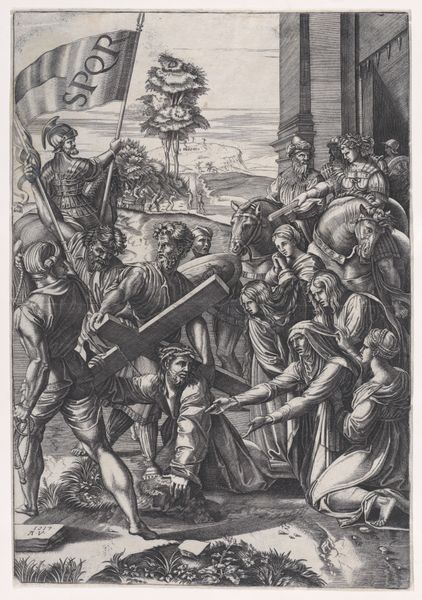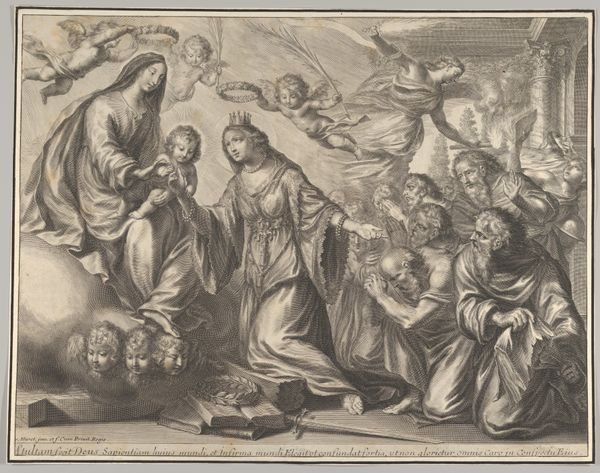
Die Kinder Israels werden in der Wüste gespeist und getränkt 9 - 1827
0:00
0:00
Copyright: Public Domain
Curator: This compelling engraving is titled "Die Kinder Israels werden in der Wüste gespeist und getränkt," or, "The Children of Israel Fed and Given Drink in the Desert," made around 1827 by Julius Schnorr von Carolsfeld. It’s currently held at the Städel Museum. Editor: My first impression is the dynamism! It feels very busy, like a snapshot of chaos, even though it’s rendered in such a controlled medium. The stark contrast of ink on paper adds to that tension. Curator: Indeed. It's based on the biblical story from Exodus where Moses strikes a rock, and water miraculously flows forth to quench the thirst of the Israelites wandering in the desert. Carolsfeld was part of a movement that looked to religious subjects as sources of artistic and moral inspiration. This was meant to have real social impact, echoing sentiments in a time of enormous political upheaval in Europe. Editor: You can definitely see the labor in this piece. The density of lines to create light and shadow, the clear act of mark-making – it points to the immense time investment and skill needed for engraving. You can see figures reaching to gather Manna and water, clearly depicting the necessity of this resource production in an almost allegorical sense. Curator: It is a rather potent image, illustrating both divine intervention and the community's reliance on their leader. Note the figure of God in the top center of the frame directing from on high and Moses almost dead center holding the rod. These kinds of depictions really solidified his place within the cultural narrative as almost a saint. Editor: What I find fascinating is the very conscious arrangement of the figures. The repeated gestures, like arms raised towards the heavens or bent to collect water, speak volumes about how social strata dictates these figures roles in obtaining sustenance. Who made the paper? Who printed the engraving? Who bought this artwork and hung it on their wall? These questions of consumption bring new life into this work that simply noting it's relation to religious text does not address. Curator: Absolutely. When exhibited, these prints served a didactic function, reinforcing established religious and social hierarchies, although through readily accessible images, it widened distribution beyond traditional elites. Editor: Precisely. Ultimately, studying the physical components reveals the complex dance between artistry, religious dogma, and power relations. The material speaks volumes. Curator: Agreed, and in engaging with the art history alongside its materials, it presents us a really comprehensive narrative of culture production, consumption and power in the 19th Century.
Comments
No comments
Be the first to comment and join the conversation on the ultimate creative platform.
